‘It’s bold’: L.A. moves to close Wilshire Boulevard through MacArthur Park
(Myung J. Chun/Los Angeles Times)
One of Los Angeles’ most iconic streets may soon be car-free — or at least a small section of it.
City leaders announced the first step Tuesday toward eliminating vehicles on a less than half-mile stretch of Wilshire Boulevard bisecting MacArthur Park. Over the coming year, planners will seek community input, draft environmental documents and test closures in a bid to permanently shut down that portion of road.
If achieved, the closure would mark a watershed moment for a region that has been grappling with what public space means in the center of car culture. And it would be the most significant closure of a major arterial street in recent memory.
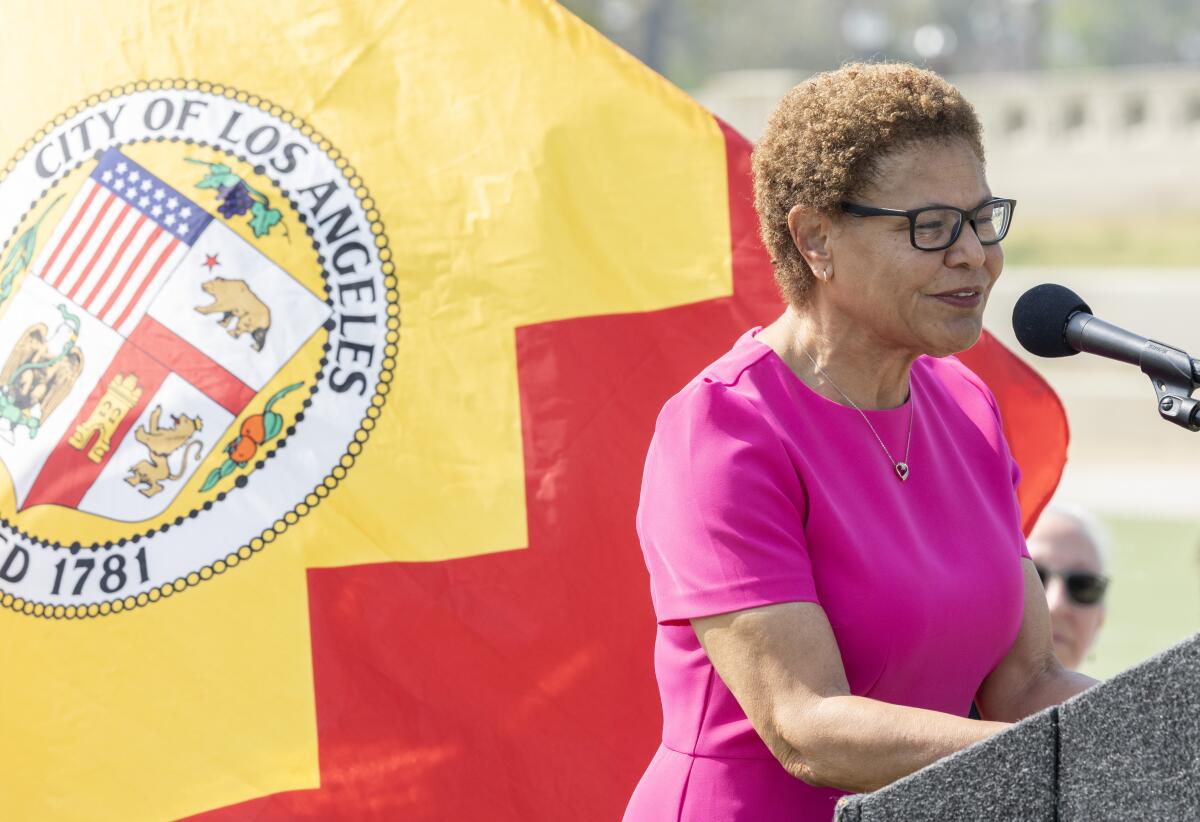
The span of Wilshire targeted for closure is in the heart of a dense, immigrant community marked by poverty and a teeming street culture. With its playgrounds and grass fields, the palm-tree-dotted park has welcomed families — but also has been a haven for drug use.
“It’s about opening up this neighborhood to the possibilities that come when we center people’s needs over the needs of cars,” said Eunisses Hernandez, whose district spans a swath of the Eastside. “It’s about dreaming bigger and better for a community in critical need of deep investment.”
Planners hope to eventually extend the greenbelt toward Lafayette Park, less than half a mile west.
“It’s bold,” said Michael Schneider, who ran a successful campaign to pass ballot Measure HLA, which forces Los Angeles to build more bicycle paths and room for pedestrians on roads. “I love it. It’s probably the boldest closure of a major arterial in Los Angeles I’ve ever seen.”
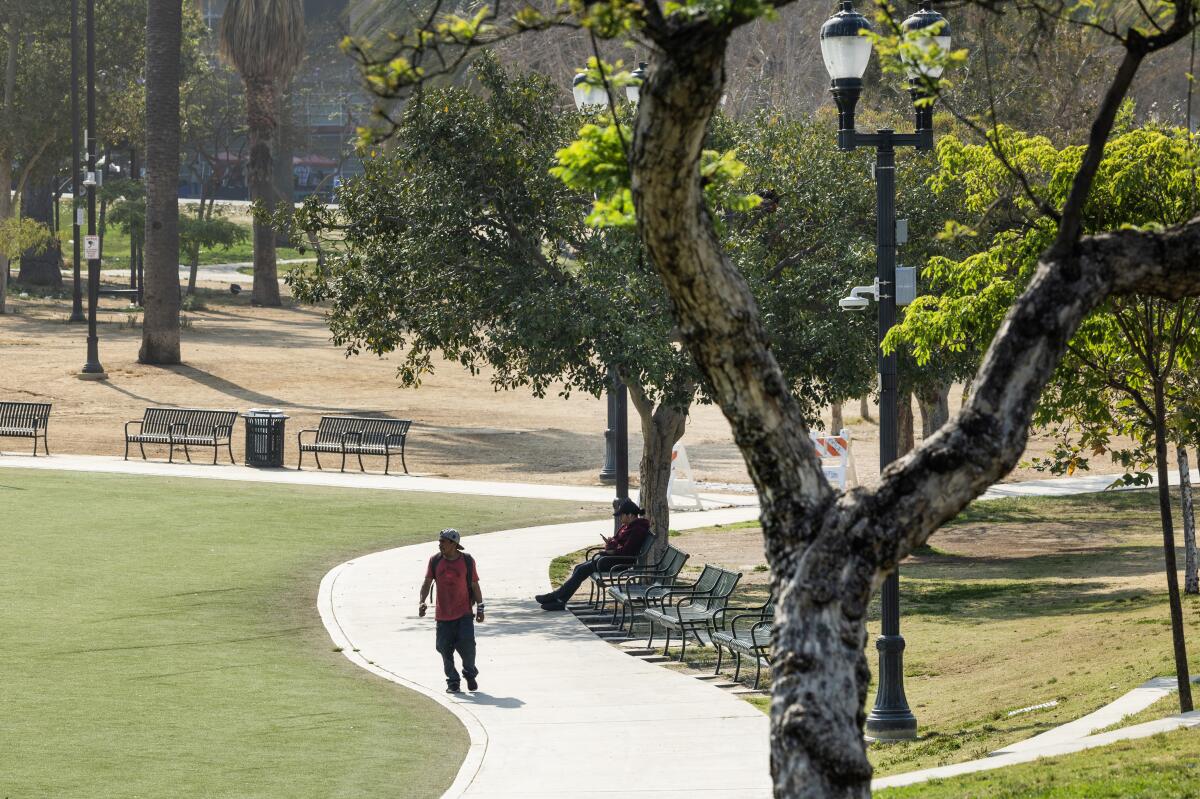
The $2.5-million effort in MacArthur Park is mostly covered by a federal grant. It’s part of a larger campaign to redress the harm caused by building roads that fractured communities, often cutting through low-income or already segregated areas. Several projects in the county received funding, including $3.59 million for a park over the 101 Freeway.
The changes come as the nation rethinks its dependency on cars.
With the streets devoid of cars during the pandemic, San Francisco and other cities began to shut down roadways — and some of the experiments have stuck. A long boulevard through Golden Gate Park remains mostly car-free.
The efforts have energized activists like Schneider who want to reclaim space from automobiles, which have defined cityscapes for generations and are among the largest contributors of greenhouse gases.
Why not go further, he asks, and close even larger portions of major arteries?
But MacArthur Park’s issues won’t be solved solely by eliminating a stretch of roadway. The area represents both the city’s promise and its most difficult challenges.
As Hernandez made the announcement Tuesday, a disheveled man sat under the shade of a nearby tree. Several others, some without shoes, were gathered by a nearby bathroom where a weathered sign warned of regular LAPD patrols.
The iconic park sits in the heart of Westlake, an immigrant hub where residents live in some of the country’s most crowded conditions. On the east end, drug users sleep on the grass while dealers mix with the crowd around the periphery. Overdoses are regular occurrences.
Across the street, vendors hawk tacos and trinkets and families with small children navigate the crowded sidewalk.
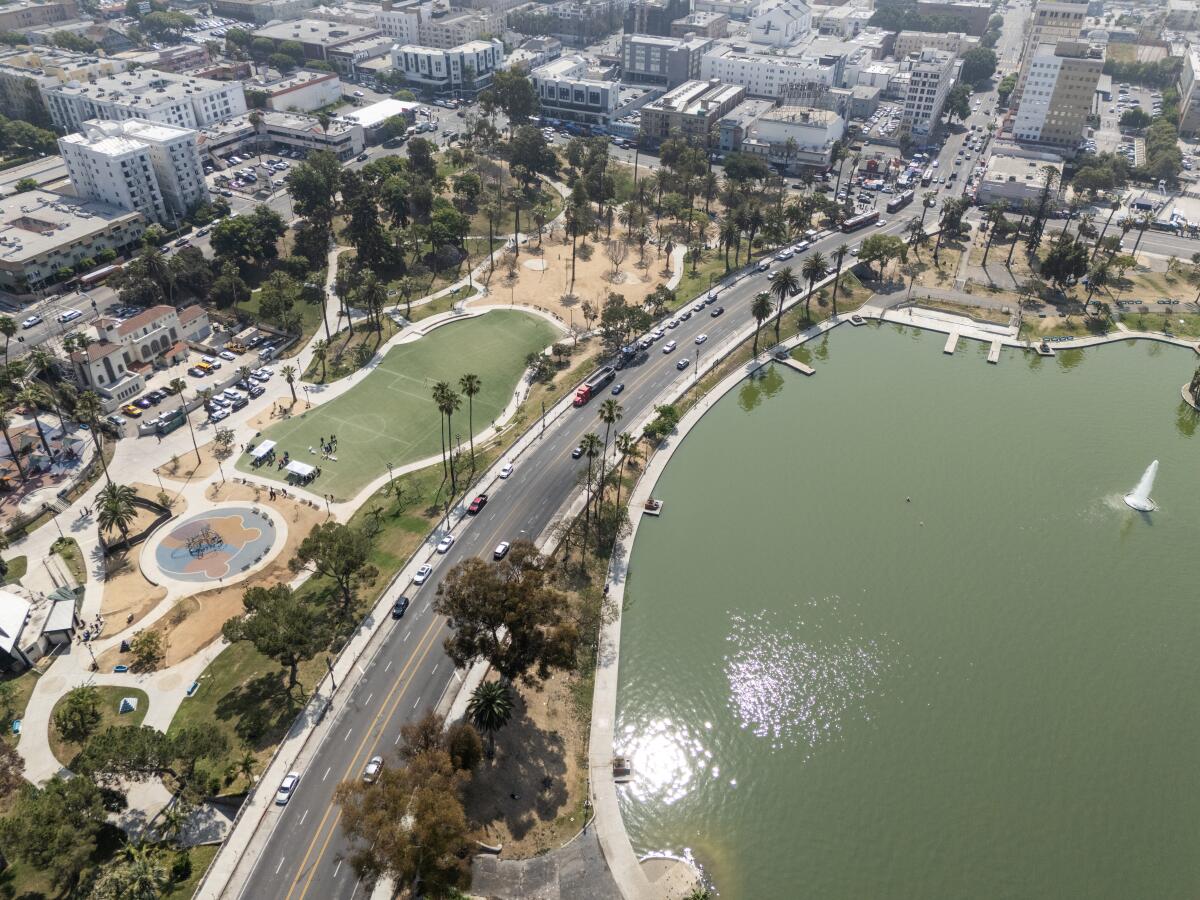
The proposal would expand the park by two football fields, bringing shade trees and fields of green space. But those who live in the tall, aging apartments nearby say Wilshire Boulevard doesn’t prevent them from coming to the park — it’s the drug use and homelessness.
Some residents said they like the convenience of the road, which is one of the most widely used bus transit routes in the city.
“It’s very uncomfortable to come here,” Cristina Chavez, 43, said as she watched her 12- and 15-year-old boys sitting on a swing set. She explained that her sons are on summer vacation, but she won’t let them go to the park alone. “It’s dangerous,” she said.
Shortly before a phalanx of well-dressed city workers descended on the park for the news conference, a city cleanup team was mopping trash and debris on the corner of Wilshire Boulevard and Alvarado Street, where it is not unusual to see tarp tents covering the sidewalk, and drug users slipping in and out.
“MacArthur Park is the overdose epicenter of the city of Los Angeles. And it’s something that we cannot turn away from,” Hernandez said. “This is a multilayered approach that we’re taking, to make it a place where ... it’s like, ‘Oh, yeah, I want to go to that area.’ Because right now, this is not that.”
The council office secured $3 million from the city’s opioid settlement fund to build what’s dubbed a “respite center” within half a mile of the park. It will be a space for service providers to offer those without a home referrals to primary healthcare and substance use treatment, wound care, hygiene kits and restrooms and access to naloxone, the opioid overdose reversal drug.
The effort would dovetail with the finalization of the road closure study, which Laura Rubio-Cornejo, general manager of the Los Angeles Department of Transportation, said would prepare the city to “reclaim a section of the roadway for the people.”
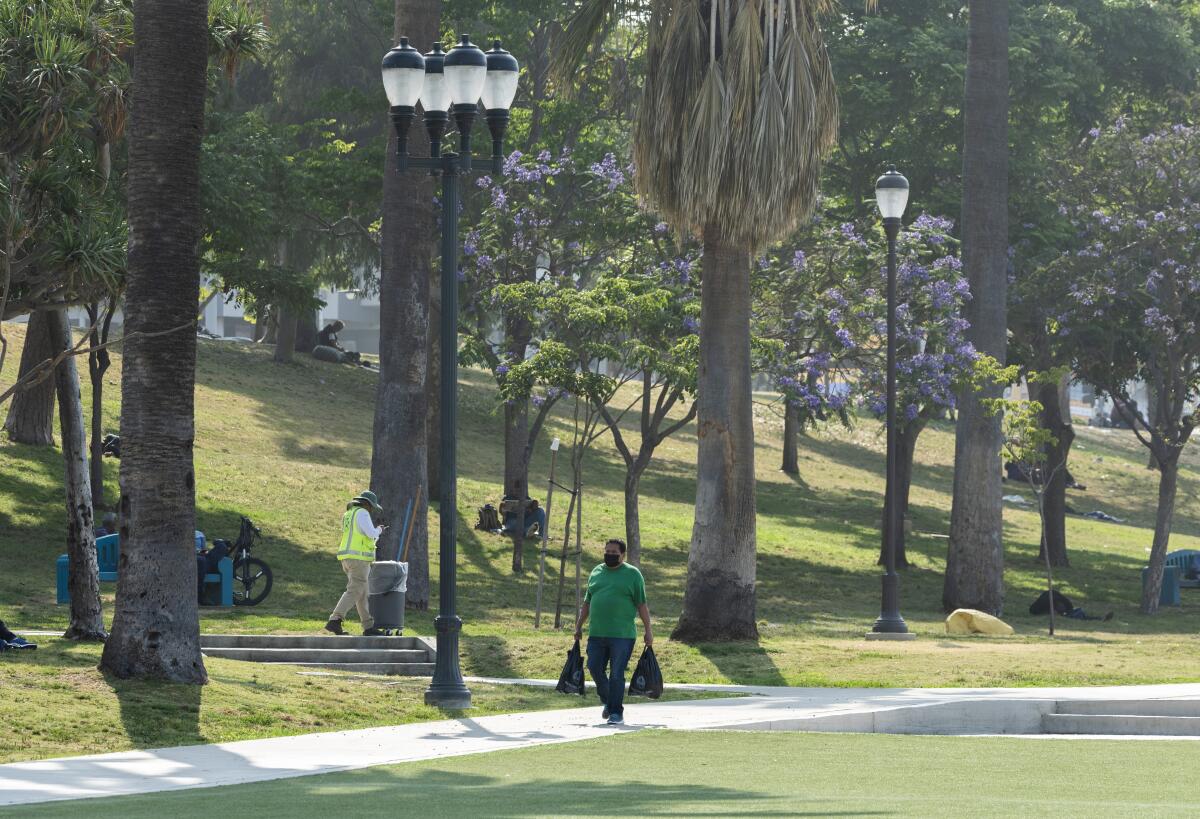
Wilshire Boulevard was the precursor to L.A.’s highways — congestion nightmares.
In the 1920s, it was so packed with traffic, city planners introduced traffic circles and then signals. It was the city’s first street to be striped in 1930. In 1934, a road that sliced through the park opened. It was touted as “California’s most famous thoroughfare,” named after Henry Gaylord Wilshire, who gifted the land — then surrounded by a wealthy enclave — to the city.
The Times noted it was the “successful completion of an uninterrupted boulevard from Los Angeles to the sea.”
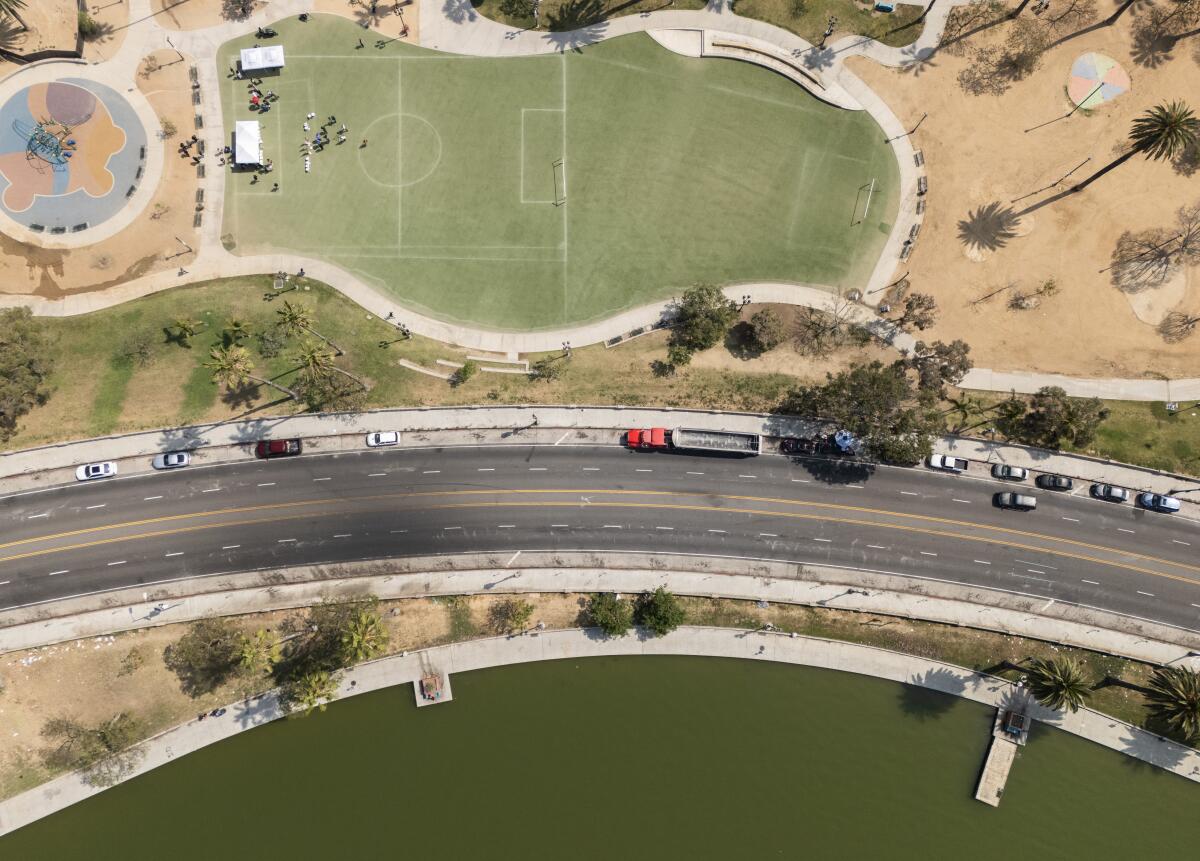
“Almost 90 years ago, a decision was made to split this park in two, to prioritize the movement of cars, effectively disregarding the connectedness of a community. It was done without regard for the people who lived and worked in this area,” Rubio-Cornejo said. “And that decision has forever altered the character of this neighborhood and has affected everything from safety to air quality for this community.”
Kevin Roderick, author of “Wilshire Boulevard: The Grand Concourse of Los Angeles,” said history shows that whatever happens, the returning of the park to its original space will never make everyone happy.
“I imagine there will be some winners, people will have more park space, but there will be some losers too,” he said. “That’s anyone who has to deal with traffic on the other streets, because this is a big one.”
More to Read
Sign up for Essential California
The most important California stories and recommendations in your inbox every morning.
You may occasionally receive promotional content from the Los Angeles Times.










